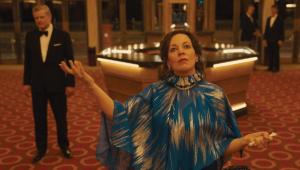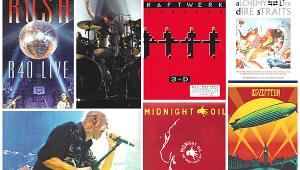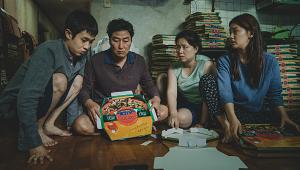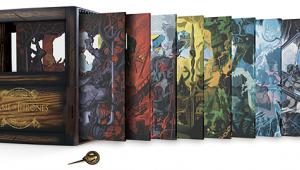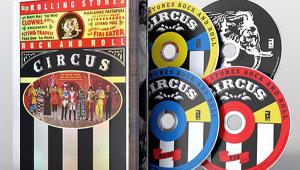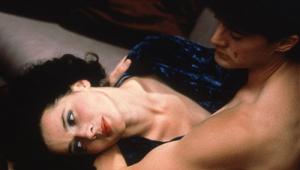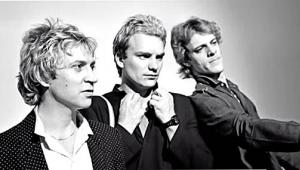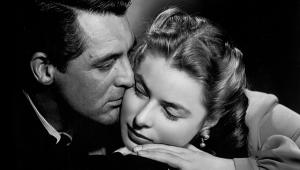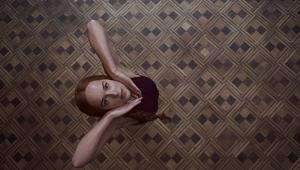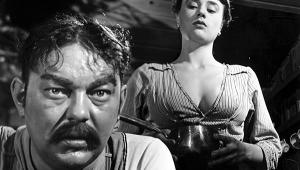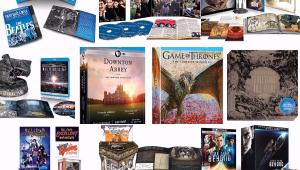Snow White Lives Page 4
Mixing a New Potion So how did Porter take a monaural track and turn it into a 5.1-channel recording? "This is something we've been working on for eleven years, and it's not about a box," Porter said. "It's more of an intellectual process. It allows us to take a mono track to a very pleasing 5.1, but in no way does it sound gimmicky or synthesized."
Porter and Carey were coy about describing the process, which involved mixing the original mono recording to spread throughout a 5.1-channel surround sound field. "I don't think everybody has figured out just how to do this the way we do it, and we want to keep the special sauce, well . . . special," Carey said.
"Let's be clear about what we mean when we say 5.1-channel sound," he added. "It would have been unfaithful to the original to have the different dwarfs coming out of different speakers, or to have effects zooming by you as they would in a modern movie such as Star Wars, because that isn't the way this movie was made."
Instead bass comes out of the subwoofer, and the full range of sound and music comes out of all five main speakers. "The music sounds exactly the same contentwise," Porter added, "but it absolutely envelops you, so the overall perception and feel of it is 2001."
And how would he characterize sound in 2001? "It's about the fidelity," he said. "In the 1937 version, there was very little at the low end on the soundtrack, and not much top end. All of the sound came out of one speaker." By contrast, Porter describes today's sound with the sensuousness a dessert chef might reserve for a perfect crème brulée. "Now, it has a nice warm, full low end and a crisp-feeling top end in the appropriate places."
Porter said that when he was stumped, "I tried to put myself in a position where I felt comfortable knowing that if Walt were watching what I was doing, he'd approve."
Roy Disney was initially apprehensive about creating a 5.1-channel version of the original soundtrack. "When I heard about those plans, I jumped out of my seat and said, 'Wait a minute, they didn't make the movie like that.' It really scared me. I think it's important that we preserve the integrity of the original sound. What we've done is get closer to the original by splitting the sound between the speakers in a way that broadens it."
Disney sounded even more apprehensive about his role on the DVD, introducing the two-disc set through a conversation with the Magic Mirror. And so to what section did the scion of the Disney clan choose to go first, upon receiving a beta copy of the disc?
"I went immediately to check out my own acting - my speech and the little exchange with the Magic Mirror character," he said. "After I satisfied myself that it was okay - and that after all, I couldn't do anything about it - I went for a virtual walk through the historical art gallery, which shows you how art for the animations evolved over time."
Mirror with Attitude The Magic Mirror serves as an interactive host throughout the disc, keeping viewers involved. "It's a great gimmick," Disney said, "because it gets you from place to place in a really cute, engaging way."
Carey feels that the Mirror plays a pivotal role in distinguishing the Snow White DVD from anything else on the market. "With the Magic Mirror as host, you're entertained right off the bat," he said during a visit to Disney's Secret Lab in the San Fernando Valley, where the Mirror images were produced. A cross between the Mask of Tragedy and the sardonic screen personality of the late Vincent Price, the Mirror is a departure from static DVD menus that leave viewers to wade through a disc's contents on their own. More important, said Carey, "It keeps you entertained."
An entire script and series of animations were paired to create the Mirror, voiced by Tony Jay, who was the voice of Frolo in The Hunchback of Notre Dame. The creative team decided that digital animation would lend the character more dimensionality than traditional hand-drawn animation. The Mirror was colored and the light and texture manipulated to give him a painterly look true to the original film.
The team then used software to isolate the Mirror's broad, key expressions. These were made into a series of animations that would enable them to change the expressions by moving a slider up and down. A digital library was then created so the animators could literally drag and drop key expressions into an animated timeline.
"One of the challenges of this character is that he doesn't have eyes - he's just a mask," said Stan Deneroff, director of DVD productions. He also has no teeth or lips to signal sounds. "We ended up dropping a lot of sounds in favor of expressions," said Eamonn Butler, who was responsible for developing the character. "It's not noticeable because you're being entertained. If the dialogue works for you, you don't need to see the mask behave the way you would expect a character's face to behave."
If you don't make a menu selection right away, the Mirror has been designed to encourage you along. And his comic remarks vary so you won't hear the same thing every time you load the disc. So what are Butler's favorite lines? "I like the one where he's prodding the viewer to choose from the menu and says, 'I don't have all eternity, you know.' And then he remembers who he is, pulls a frown, and says, 'Oh, wait, I do.' "
The studio believes that its use of the Magic Mirror as host marks an evolutionary step in the history of the DVD. "The goal was to create an immersive experience," said Deneroff, "one where you feel as if you're truly entering into the Snow White world."
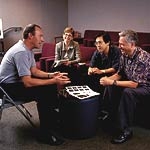 Chris Carey and Laura Evenson talk with vice president of brand marketing Gordon Ho and Stan Deneroff about how the Magic Mirror is used to help immerse viewers in the DVD. Chris Carey and Laura Evenson talk with vice president of brand marketing Gordon Ho and Stan Deneroff about how the Magic Mirror is used to help immerse viewers in the DVD. |  Carey directs telecine colorist Mitch Drickman on applying the final touches to Snow White's visual restoration. Carey directs telecine colorist Mitch Drickman on applying the final touches to Snow White's visual restoration. |
- Log in or register to post comments
